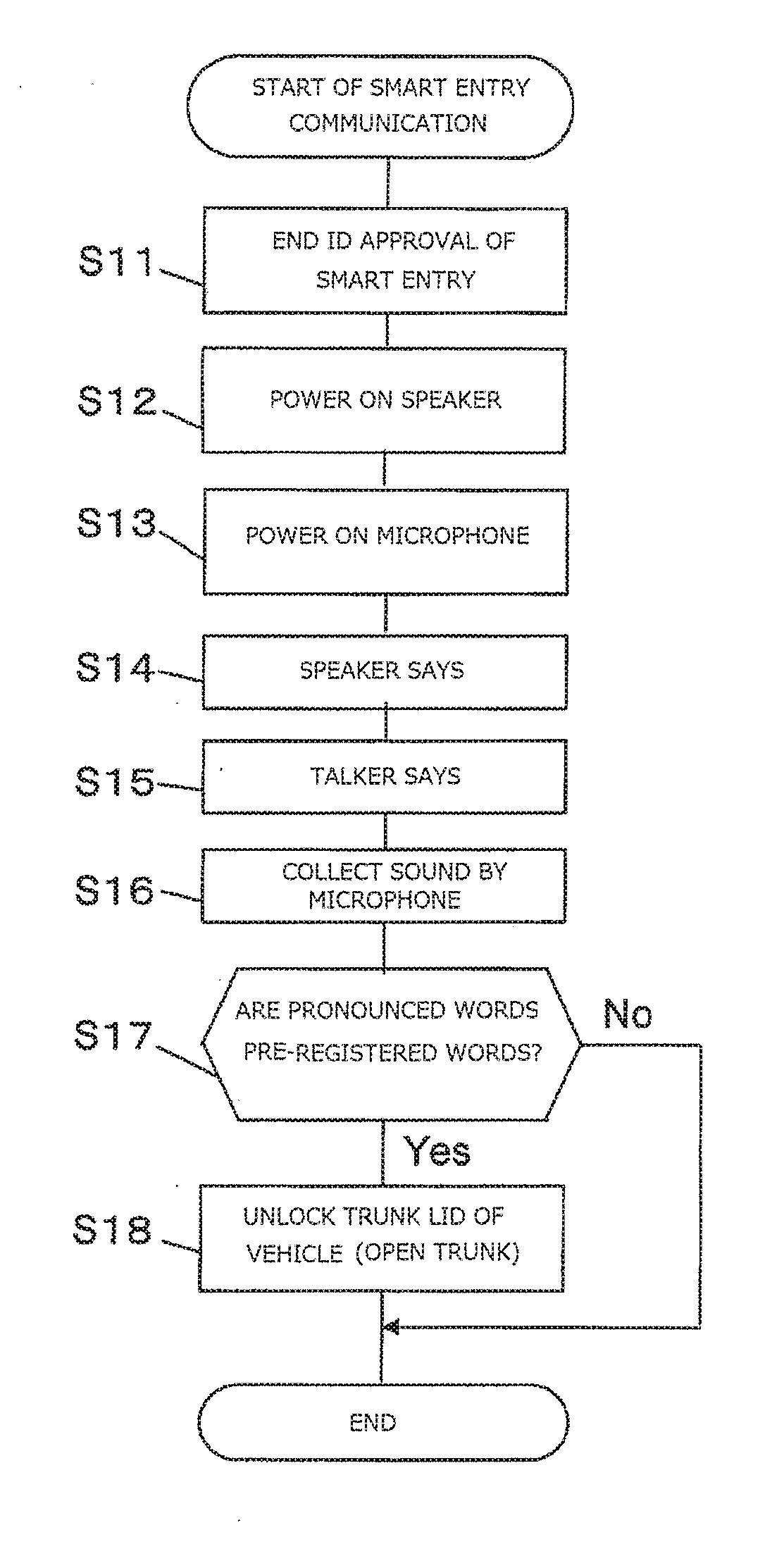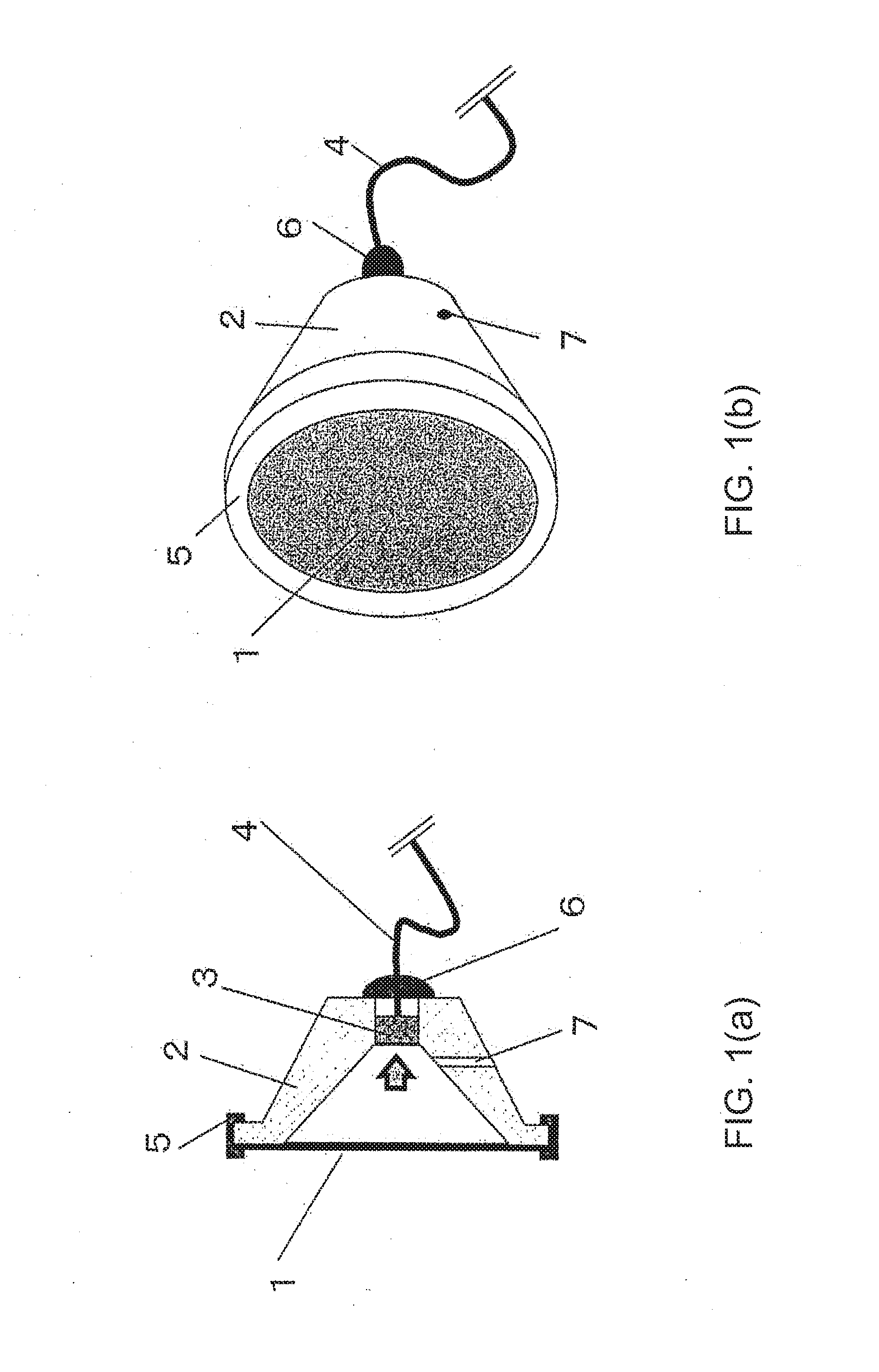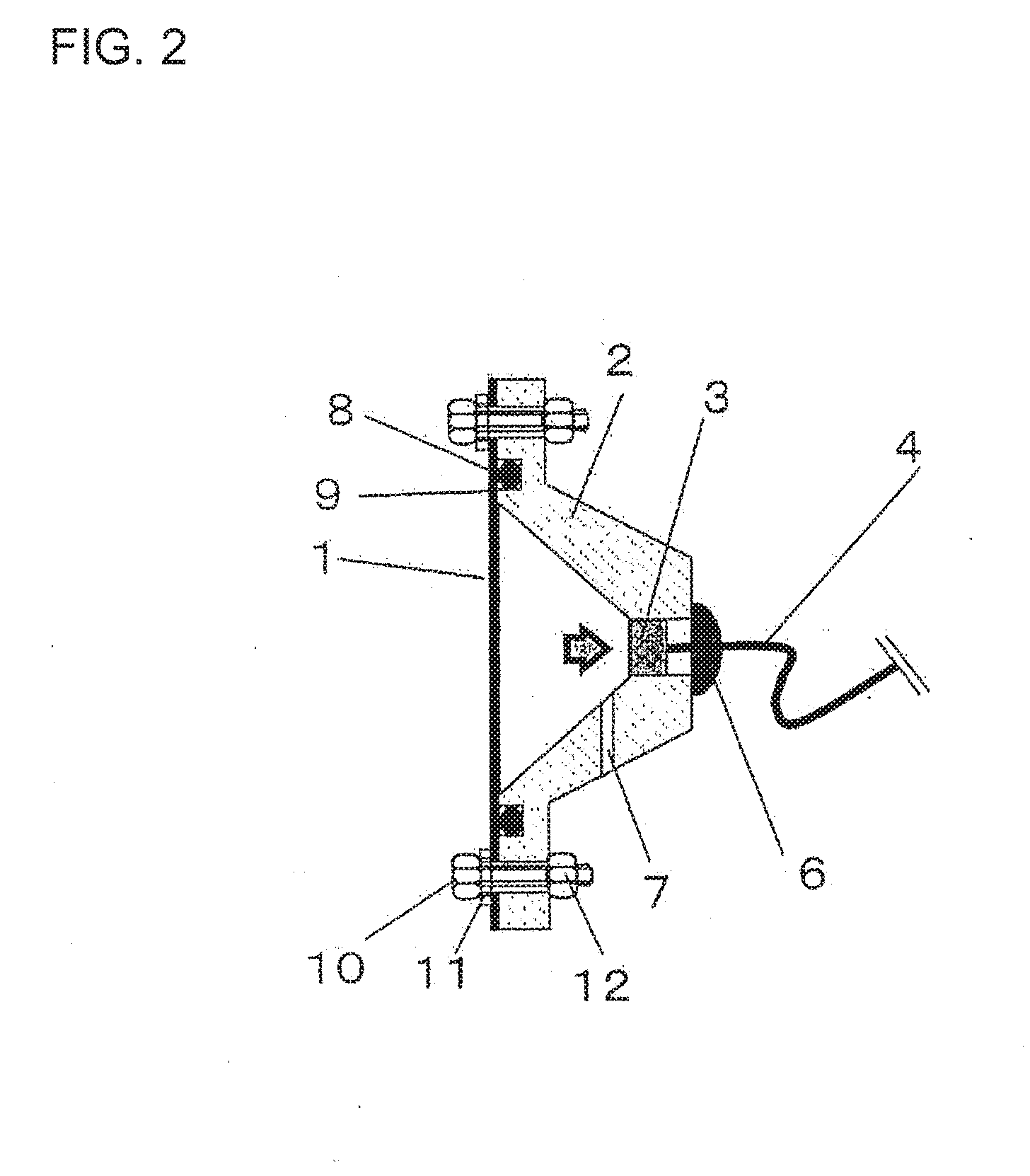Microphone
a technology of microphones and microphones, applied in the field of microphones, can solve the problems of not being able to examine the structure of microphones against water, rubbish, or dust ingress, and the environmental resistance of microphones, so as to prevent the breakdown of an acoustic transducer, prevent water, rubbish, or dust ingress, and achieve high environmental resistance
- Summary
- Abstract
- Description
- Claims
- Application Information
AI Technical Summary
Benefits of technology
Problems solved by technology
Method used
Image
Examples
first embodiment
[0102]Hereinafter, a first embodiment of the invention will be described in detail with reference to FIGS. 1(a) to 2.
[0103]FIGS. 1(a) and 1(b) are schematic diagrams illustrating the structure of a microphone according to the first embodiment of the invention. FIG. 1(a) is a sectional view of the microphone and FIG. 1(b) is a perspective view of the microphone.
[0104]As illustrated in FIGS. 1(a) and 1(b), the microphone according to the embodiment is configured to include a diaphragm 1, a frame 2, an acoustic transducer 3, a wire 4 that transmits a signal of the acoustic transducer 3 to the outside or supplies power to the acoustic transducer 3, and a packing 5 that prevents ingress of water, rubbish, or dust from a connection portion of the diaphragm 1 and the frame 2, and a resin coating member 6 that prevents ingress of water, rubbish, or dust from a gap between the frame 2 and the wire 4.
[0105]In FIG. 1(a), the internal shape of the frame 2 is the shape of a conical surface, but ...
second embodiment
[0114]Hereinafter, a second embodiment of the invention will be described in detail with reference to FIG. 4.
[0115]FIG. 4 is a schematic sectional view illustrating the structure of a microphone according to the second embodiment of the invention. As illustrated in FIG. 4, the microphone according to the embodiment is different from the microphone in FIG. 1(a) according to the first embodiment in the internal shape of a frame 13, a disposal position and a sound input direction (indicated by an arrow in FIG. 4) of the acoustic transducer 3.
[0116]In the embodiment, the internal shape of the frame 13 is the surface of a parabolic surface used for a parabolic antenna. This is because a sound to be input is indicated by the arrow in FIG. 4 in the acoustic transducer 3. By collecting the sound in the shape of the parabolic surface, it is possible to realize a telephoto microphone capable of collecting a more distant sound than the shape of the microphone described in the first embodiment....
third embodiment
[0117]Hereinafter, a third embodiment of the invention will be described in detail with reference to FIGS. 5(a), 5(b), and 6.
[0118]The embodiment is different from the first and second embodiments in that a plurality of acoustic transducers are present.
[0119]FIGS. 5(a) and 5(b) are schematic diagrams illustrating the structure of a microphone according to the third embodiment of the invention. FIG. 5(a) is a plan view illustrating the microphone from which a diaphragm 107 and a packing 113 are excluded. FIG. 5(b) is a sectional view illustrating the microphone.
[0120]As illustrated in FIGS. 5(a) and 5(b), the microphone according to the embodiment is configured to include the diaphragm 107, a frame 108 having a partition wall 109, two acoustic transducers 110a and 110b, wires 112a and 112b that transmit signals of the acoustic transducers to the outside or supply power to the acoustic transducers, the packing 113 that prevents ingress of water, rubbish, or dust from a connection port...
PUM
 Login to View More
Login to View More Abstract
Description
Claims
Application Information
 Login to View More
Login to View More - R&D
- Intellectual Property
- Life Sciences
- Materials
- Tech Scout
- Unparalleled Data Quality
- Higher Quality Content
- 60% Fewer Hallucinations
Browse by: Latest US Patents, China's latest patents, Technical Efficacy Thesaurus, Application Domain, Technology Topic, Popular Technical Reports.
© 2025 PatSnap. All rights reserved.Legal|Privacy policy|Modern Slavery Act Transparency Statement|Sitemap|About US| Contact US: help@patsnap.com



